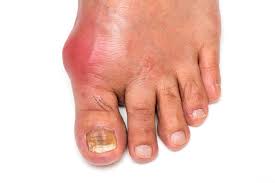Psoriatic arthritis is a type of inflammatory arthritis that can affect people who have psoriasis, a chronic autoimmune skin condition. Psoriatic arthritis typically causes joint pain, stiffness, and swelling, and can affect any joint in the body, including the feet and ankles.
Symptoms of psoriatic arthritis in the feet may include pain, swelling, and stiffness in the joints, as well as changes to the nails such as pitting, thickening, or separation from the nail bed. In some cases, psoriatic arthritis can cause joint deformities, especially if left untreated.
The diagnosis of psoriatic arthritis is usually made based on the patient’s medical history, physical examination, and imaging studies such as X-rays or MRI. Blood tests may also be used to help confirm the diagnosis and rule out other conditions.
Treatment of psoriatic arthritis in the feet may include a combination of medications such as non-steroidal anti-inflammatory drugs (NSAIDs), disease-modifying anti-rheumatic drugs (DMARDs), biologics, and corticosteroids. Physical therapy and exercise may also be recommended to improve joint mobility and strengthen the muscles around the affected joints.
It is important for people with psoriatic arthritis to take good care of their feet and to see a podiatrist regularly for foot exams and treatment. This may include wearing appropriate footwear, using orthotics or other supportive devices, and maintaining good foot hygiene to prevent infections and other complications.
Overall, psoriatic arthritis is a chronic condition that requires ongoing management and treatment to control symptoms and prevent complications. Working with a healthcare provider can help develop an individualised treatment plan that meets the specific needs of the patient.









